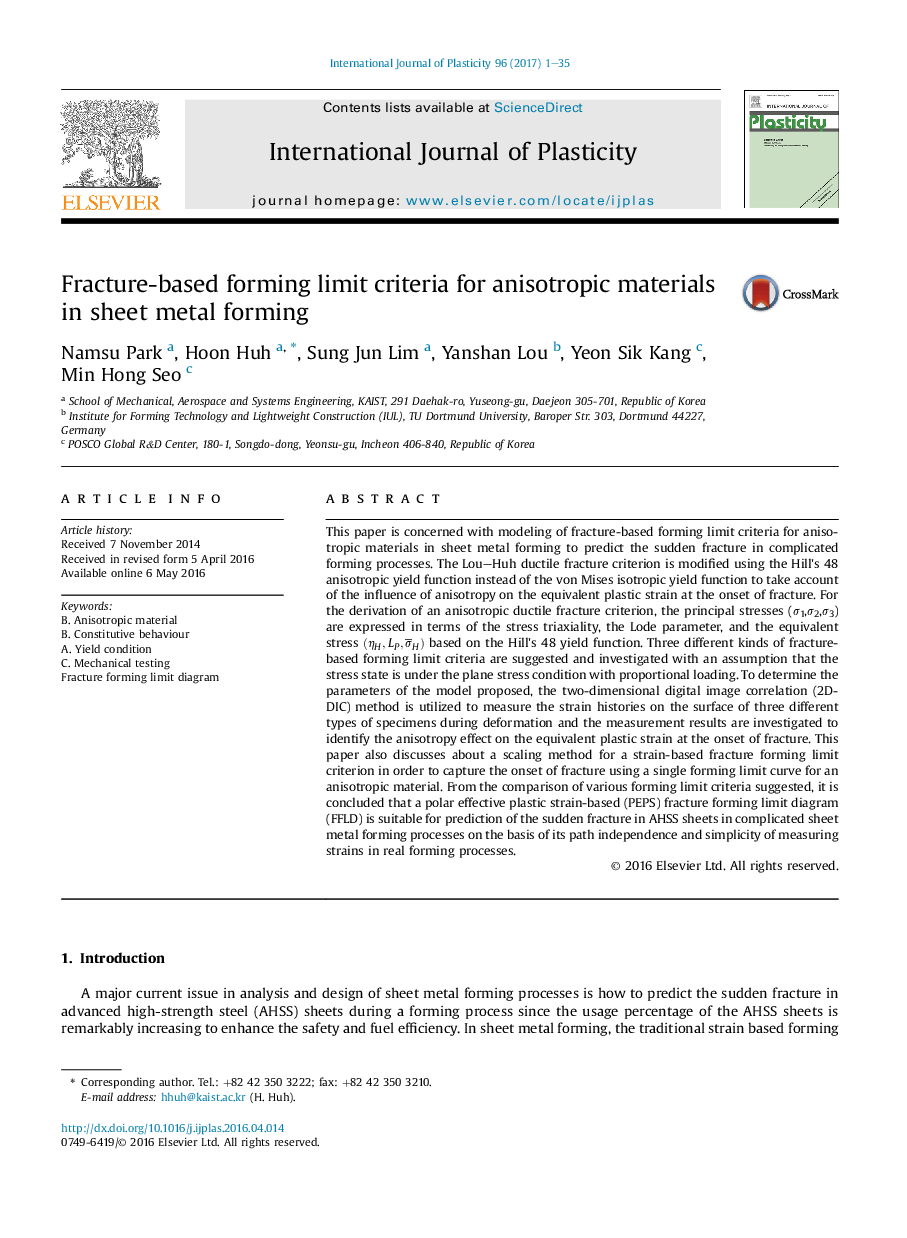| Article ID | Journal | Published Year | Pages | File Type |
|---|---|---|---|---|
| 5016745 | International Journal of Plasticity | 2017 | 35 Pages |
Abstract
This paper is concerned with modeling of fracture-based forming limit criteria for anisotropic materials in sheet metal forming to predict the sudden fracture in complicated forming processes. The Lou-Huh ductile fracture criterion is modified using the Hill's 48 anisotropic yield function instead of the von Mises isotropic yield function to take account of the influence of anisotropy on the equivalent plastic strain at the onset of fracture. For the derivation of an anisotropic ductile fracture criterion, the principal stresses (Ï1,Ï2,Ï3) are expressed in terms of the stress triaxiality, the Lode parameter, and the equivalent stress (ηH,LP,ϯH) based on the Hill's 48 yield function. Three different kinds of fracture-based forming limit criteria are suggested and investigated with an assumption that the stress state is under the plane stress condition with proportional loading. To determine the parameters of the model proposed, the two-dimensional digital image correlation (2D-DIC) method is utilized to measure the strain histories on the surface of three different types of specimens during deformation and the measurement results are investigated to identify the anisotropy effect on the equivalent plastic strain at the onset of fracture. This paper also discusses about a scaling method for a strain-based fracture forming limit criterion in order to capture the onset of fracture using a single forming limit curve for an anisotropic material. From the comparison of various forming limit criteria suggested, it is concluded that a polar effective plastic strain-based (PEPS) fracture forming limit diagram (FFLD) is suitable for prediction of the sudden fracture in AHSS sheets in complicated sheet metal forming processes on the basis of its path independence and simplicity of measuring strains in real forming processes.
Related Topics
Physical Sciences and Engineering
Engineering
Mechanical Engineering
Authors
Namsu Park, Hoon Huh, Sung Jun Lim, Yanshan Lou, Yeon Sik Kang, Min Hong Seo,
